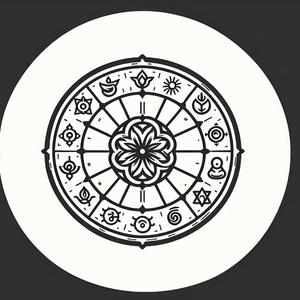The Lampshade Oracle: Whispering with History

Central to the Whispering Appraiser’s mystique is their unusual habit of speaking only in whispers after sunset. This peculiar practice, which some might dismiss as eccentricity, holds deep symbolic significance. Witnesses recount a striking transformation as daylight fades: their voice softens to a near-murmur, their movements slow, and their focus intensifies as if they are entering a meditative state. According to those who have worked with the appraiser, this ritual is not mere affectation but a deliberate philosophy. The appraiser believes that whispers evoke the passage of time and mimic the voices of history that remain just beneath the surface of our consciousness. “When I whisper,” the appraiser explained in a rare interview, “it feels as though I am speaking directly to the past. Loud voices belong to the present. Whispers, however, belong to yesterday.” This philosophy extends to the way they approach antiques, particularly their beloved 1920s lampshades. For the Whispering Appraiser, these objects are far more than decorative accessories; they are time capsules that reflect the artistic exuberance, cultural shifts, and untold stories of the Jazz Age. With whispers as their medium, they engage in what can only be described as a dialogue with history, coaxing out the concealed narratives of these artifacts.
The Obsession with 1920s Lampshades
To the uninitiated, the appraiser’s singular focus on 1920s lampshades might seem perplexing. Why not more iconic antiques, such as art pieces or furniture? But to those who understand the depth of their passion, the answer is simple: lampshades offer a unique intersection of function and artistry, encapsulating the spirit of an era in ways few objects can. The 1920s were a transformative decade, defined by the cultural rebellion of the Jazz Age, the geometric elegance of Art Deco, and the romantic fluidity of Art Nouveau. Lampshades from this period reflect these movements, often crafted with exquisite materials such as silk, beaded fringe, and hand-painted glass. They served not only as sources of illumination but as bold artistic statements, illuminating the lives of those who owned them. For the Whispering Appraiser, these lampshades represent the height of craftsmanship—a lost art in today’s world of mass production. Their expertise is unparalleled; they can identify authentic 1920s lampshades by minute details such as stitching patterns, the weight of vintage glass, and even the faint aroma of aged textiles. Their meticulous eye has led them to uncover priceless treasures in the most unassuming places: dusty flea markets, hidden corners of estate sales, and forgotten attics. What sets the appraiser apart, however, is not merely their ability to identify authenticity but their talent for uncovering the stories behind each object. To them, a lampshade is not just an item but a portal to a bygone world.
Communing with the Past
The Whispering Appraiser’s true gift lies in their ability to breathe life into the history of the objects they encounter. Their appraisals go beyond monetary valuation; they weave intricate narratives about the lives that intersected with these artifacts. One of their most famous discoveries involved a lampshade unearthed at a flea market in Paris. At first glance, it appeared to be a well-preserved Art Deco piece, but as the appraiser examined it, they began whispering softly, their fingers tracing the intricate beadwork. They claimed to sense a "residual energy" from the lampshade, as though it had graced the home of a woman who hosted clandestine jazz performances during the Prohibition era. Skeptics might have dismissed this claim as fanciful, but months of research revealed the truth. Historical records confirmed that the lampshade had indeed adorned the Parisian apartment of an expatriate known for hosting secret gatherings of American jazz musicians and European artists. The artifact was later sold to a museum, where it now stands as a testament to the rebellious spirit of the Jazz Age. Stories like this have cemented the appraiser’s reputation as both a detective of history and a storyteller. Their ability to connect seemingly mundane objects to moments of cultural significance transforms the way people perceive antiques, turning them from mere collectibles into living pieces of history.
The Myth of the Oracle
The Whispering Appraiser’s unique methods and extraordinary discoveries have elevated them to near-mythical status. To some, their whispering habit and deep connection to objects seem almost supernatural, as though they are an oracle capable of communing with the ghosts of the past. Yet, the appraiser themselves rejects such characterizations. In their own words, their work is not about magic but about listening. “History isn’t silent,” they once said. “We just have to be quiet enough to hear it.” This humility, combined with their unparalleled expertise, has made them a beloved figure in the world of vintage decor and antiques.
The story of the Whispering Appraiser is a reminder of the enduring power of passion and curiosity in a world obsessed with speed and disposability. Through their whispers, their obsession with 1920s lampshades, and their seemingly mystical ability to uncover hidden histories, they have redefined what it means to be an appraiser. They are not merely a connoisseur of antiques but a guardian of history, ensuring that the whispers of the past are preserved for future generations. In a noisy, fast-paced world, their quiet dedication serves as a powerful reminder to slow down, to listen, and to honor the stories that shape our collective human experience.
Antique Appraiser
Auction houses (e.g., Sotheby’s, Christie’s), antique dealerships, or private consultation firms
Key Responsibilities
Evaluate and authenticate vintage and antique items, such as furniture, artwork, and collectibles, for value and historical significance.
Conduct in-depth research on provenance, craft techniques, and historical contexts of artifacts.
Provide detailed written appraisals for private collectors, museums, or auction houses.
Required Skills
Expertise in specific time periods or object types (e.g., Art Deco, Victorian furniture).
Strong research skills, including familiarity with auction records and historical archives.
Certification from organizations like the International Society of Appraisers (ISA) or American Society of Appraisers (ASA).
Cultural Historian
Universities, museums (e.g., The Metropolitan Museum of Art), or historical societies
Key Responsibilities
Study and interpret artifacts, documents, and cultural practices to uncover the societal contexts of past eras.
Collaborate with museums or academic institutions to curate exhibits or publish research.
Analyze how objects, like 1920s lampshades, reflect changes in design, politics, and social behavior.
Required Skills
Advanced knowledge of specific historical periods (e.g., Jazz Age, Industrial Revolution).
Strong writing and storytelling abilities to translate research into compelling narratives.
Experience in archival research, oral histories, or material culture studies.
Restoration Specialist (Antique and Vintage Artifacts)
Museums, private collectors, or specialized restoration firms
Key Responsibilities
Restore and preserve fragile or damaged vintage items, such as textiles, glass, or woodwork, to maintain their historical integrity.
Use traditional techniques and modern technology to repair objects while respecting their original craftsmanship.
Document restoration processes and provide care guidelines for future preservation.
Required Skills
Proficiency in materials science and conservation techniques (e.g., silk reweaving, glass etching).
Attention to detail and a steady hand for intricate restoration work.
Knowledge of ethical guidelines for restoration, ensuring minimal intervention.
Vintage Buyer/Curator for Auction Houses
Auction houses (e.g., Heritage Auctions, Bonhams) or high-end vintage boutiques
Key Responsibilities
Source rare and high-value vintage items, such as Art Deco lamps or 1920s decor, for resale or auction.
Evaluate market trends and assess the potential demand for specific antique categories.
Build relationships with collectors, estate sale managers, and flea market vendors to secure unique finds.
Required Skills
In-depth knowledge of vintage markets and the ability to quickly assess an item’s authenticity and value.
Strong negotiation and communication skills for sourcing and purchasing.
Awareness of global auction trends and pricing benchmarks.
Material Culture Researcher
Academic institutions, research centers, or large museums (e.g., Smithsonian Institution)
Key Responsibilities
Investigate objects from the past, like 1920s lampshades, to understand their role in everyday life and cultural identity.
Publish findings in academic journals, documentaries, or museum catalogs.
Collaborate with appraisers, restoration specialists, and curators to provide historical context for exhibits or collections.
Required Skills
Specialized expertise in material culture fields (e.g., textiles, decorative arts, or industrial design).
Analytical skills to connect objects with larger historical and societal trends.
Advanced degrees in anthropology, history, or art history are often required.


